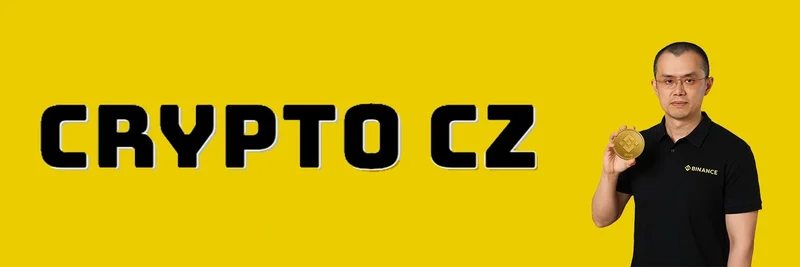TL;DR
- The token commonly referenced as “Crypto CZ” on BNB Chain at 0xb21482418e5633318d7af4fa4d1cc2bfbf291a9c lacks publicly verifiable project details and on-chain transparency.
- This absence of metadata (website, socials, supply, holders, audits) is a red flag. Treat it as unverified and high risk until proven otherwise.
- Always verify on-chain, assess liquidity and holder distribution, and use security tools before interacting with any token.
What we can verify today
- Contract address: 0xb21482418e5633318d7af4fa4d1cc2bfbf291a9c on BNB Chain.
- On leading explorers like BscScan, the address does not show the typical signals of an active, established token (comprehensive token profile, clear supply, holder stats, verified socials).
- Multiple unrelated tokens use “CZ” branding. Do not confuse this address with similarly named tokens like “CHANGPENG ZHAO” or “CZ Guardian,” which are different contracts.
Context: why “CZ” branding attracts attention
- “CZ” refers to Binance founder Changpeng Zhao, a major figure in crypto and the BNB Chain ecosystem (see Binance’s overview of BNB Chain and CZ’s background via Binance’s blog on CZ).
- Despite the memecoin buzz, CZ has repeatedly said he doesn’t buy meme coins or NFTs and has advocated for responsible tokenomics and long-term building (for example, see coverage from outlets like Decrypt and Blockonomi). He has also pushed for better practices that reduce rug-pull risk.
- In early 2025, CZ pledged to support select BNB Chain memecoin liquidity initiatives to grow the ecosystem, while reiterating that unsolicited tokens are not endorsements.
BNB Chain security and why it matters for meme tokens
- BNB Chain uses a Proof of Staked Authority (PoSA) model that enables fast, low-cost transactions—great for experimentation, but also attractive to speculative launches.
- Binance ecosystem initiatives such as AvengerDAO and DappBay’s Red Alarm aim to help users spot risks (see AvengerDAO/DappBay Red Alarm).
- Common risks for low-info tokens:
- Rug pulls (liquidity pulled by deployers)
- Hidden or high taxes and trading restrictions
- Centralized mint/blacklist functions in the contract
- Thin liquidity and skewed holder distribution
- No audits and opaque teams
Step-by-step: how to vet this token yourself (DYOR)
- Confirm the contract address on BscScan.
- Look for a verified contract, read contract functions (mint, blacklist, trading limits), and check if the source code is published.
- Review holders: Is distribution concentrated in a few wallets? Are there obvious dev/team wallets?
- Inspect liquidity.
- Is there a liquidity pool? How big is it? Is the LP locked or burned? Who controls it?
- Check recent activity.
- Are there meaningful transactions or is it dormant? Sudden spikes without community updates can be suspicious.
- Seek official channels.
- Website, X (Twitter), Telegram, GitHub, whitepaper/one-pager, and a basic roadmap. Absence of any public presence is a red flag.
- Look for third-party audits.
- A reputable audit doesn’t guarantee safety, but no audit plus opaque tokenomics is high risk.
- Run security checks.
- Use tools that flag honeypots, transfer limits, max wallet caps, and tax settings before any interaction.
Where to track and (if liquidity exists) trade
- If/when liquidity appears, BNB Chain tokens typically trade on decentralized exchanges such as PancakeSwap. Always triple-check the contract address before swapping.
- For fast monitoring, analytics, and trade execution, you can also use GMGN.AI, which offers smart money tracking, real-time metrics, security checks, and automation. Here’s the dedicated page for this contract: https://gmgn.ai/bsc/token/fV1R5sZ5_0xb21482418e5633318d7af4fa4d1cc2bfbf291a9c
- Complement your checks with BNB Chain dashboards (for example, BscScan) and market scanners like Dexscreener for BSC. Cross-reference data across tools.
Red flags to watch for on this contract
- No verified contract on BscScan and no open-source code.
- No official website or social channels, or newly created social accounts with low engagement.
- Extremely concentrated holdings or developer-controlled liquidity.
- Trading taxes above industry norms, or functions allowing the owner to change fees/blacklist.
- Mismatch between claims (e.g., “CZ-endorsed”) and reality. Remember: CZ has consistently distanced himself from meme coin endorsements.
Practical checklist before you touch the token
- Confirm you’re using the exact contract: 0xb21482418e5633318d7af4fa4d1cc2bfbf291a9c.
- Read the contract for risky functions, check holders and LP status on BscScan.
- Scan with a security tool and simulate a small test transaction only if everything checks out.
- Never trust screenshots; verify on-chain data yourself.
- Size positions conservatively and assume high volatility.
Bottom line
At the time of writing, “Crypto CZ” at 0xb21482418e5633318d7af4fa4d1cc2bfbf291a9c appears unverified and lacks the public footprint we expect from a credible, active token. Until there’s transparent information—verified contract, visible liquidity and holder distribution, official channels, and ideally an audit—treat this as speculative and high risk.
If you decide to monitor or explore it, do so with strict risk controls. Start by verifying everything on BscScan, monitor liquidity and flows, and use analytics/trading platforms such as PancakeSwap, Dexscreener, and GMGN.AI’s token page to keep tabs on any changes in real time.


, a channel for updates on the platform.*** Investments with Tokens and Futarchy](https://cdn.meme-insider.com/default-cover.jpg)